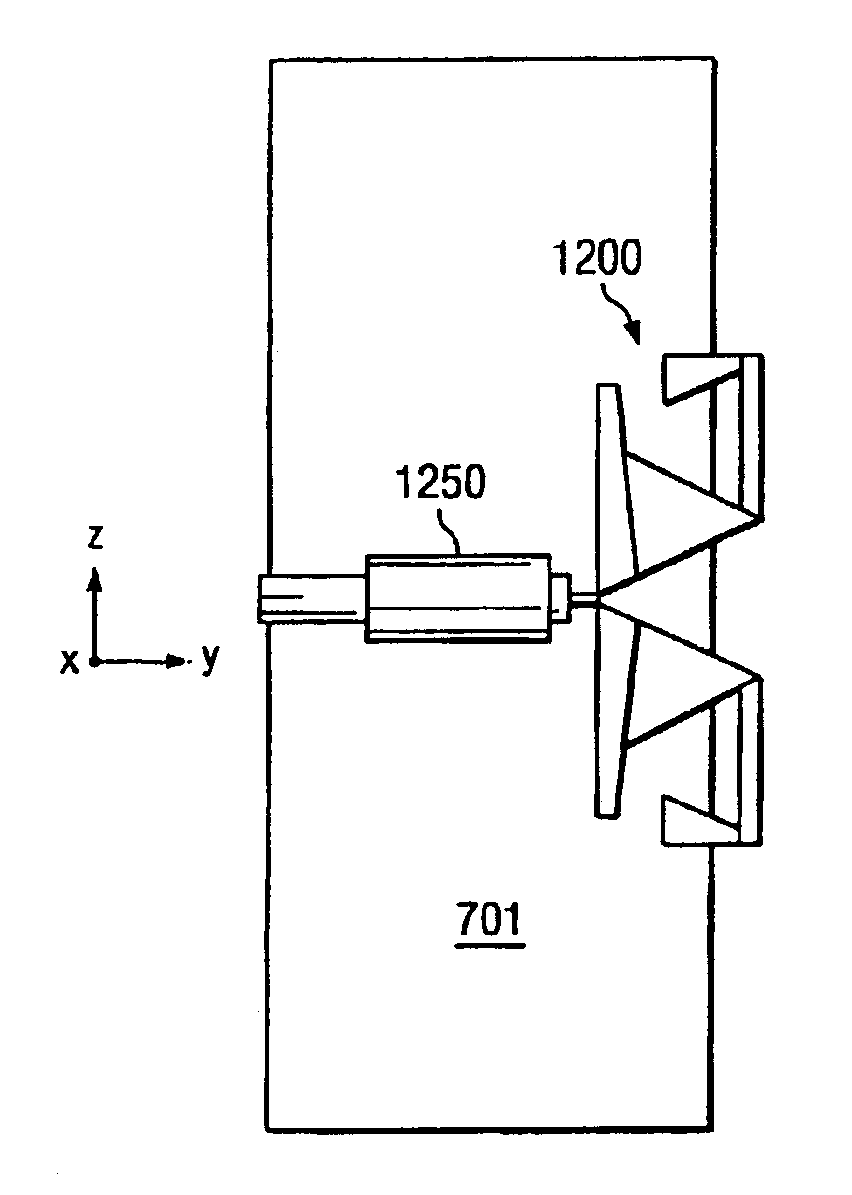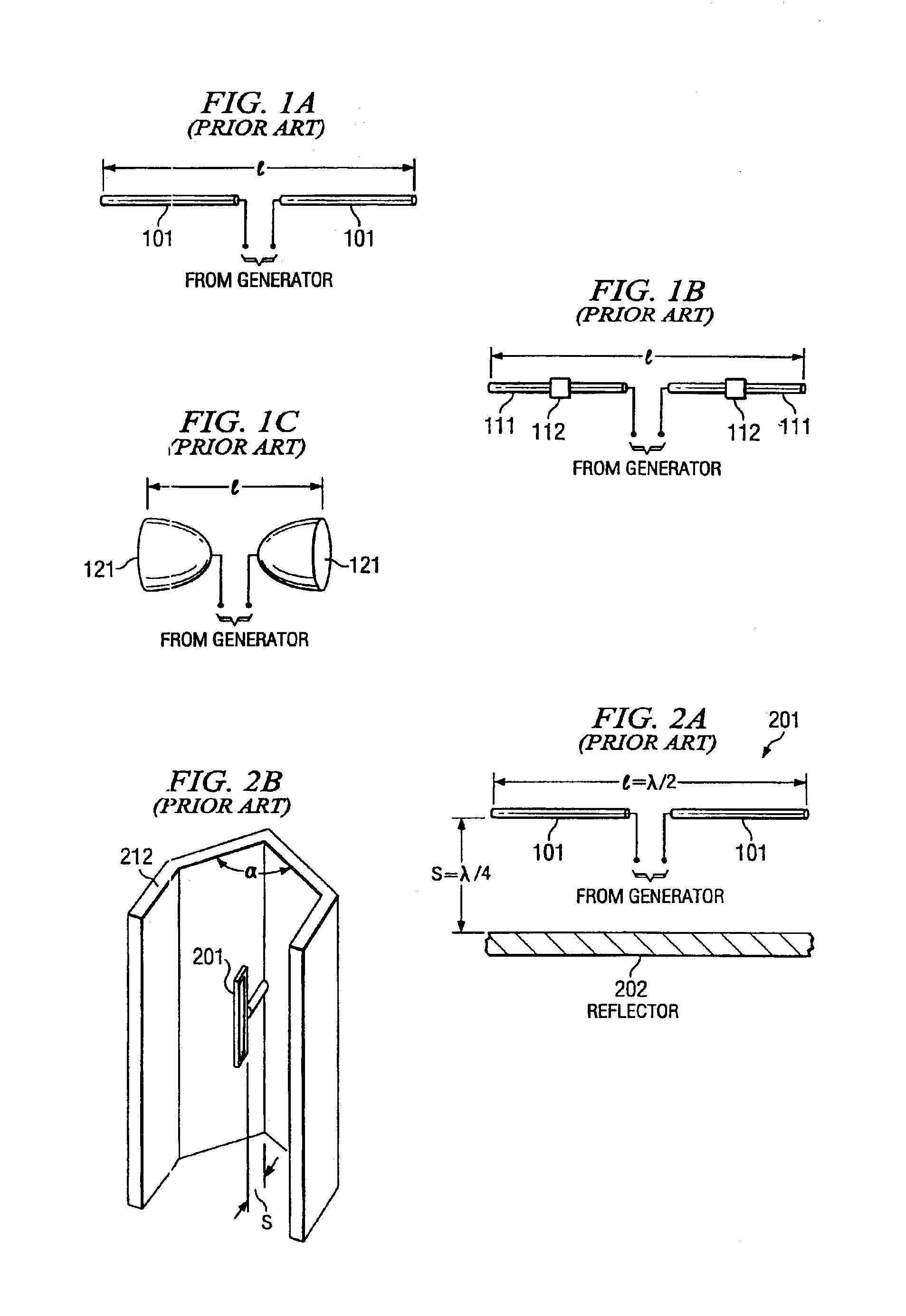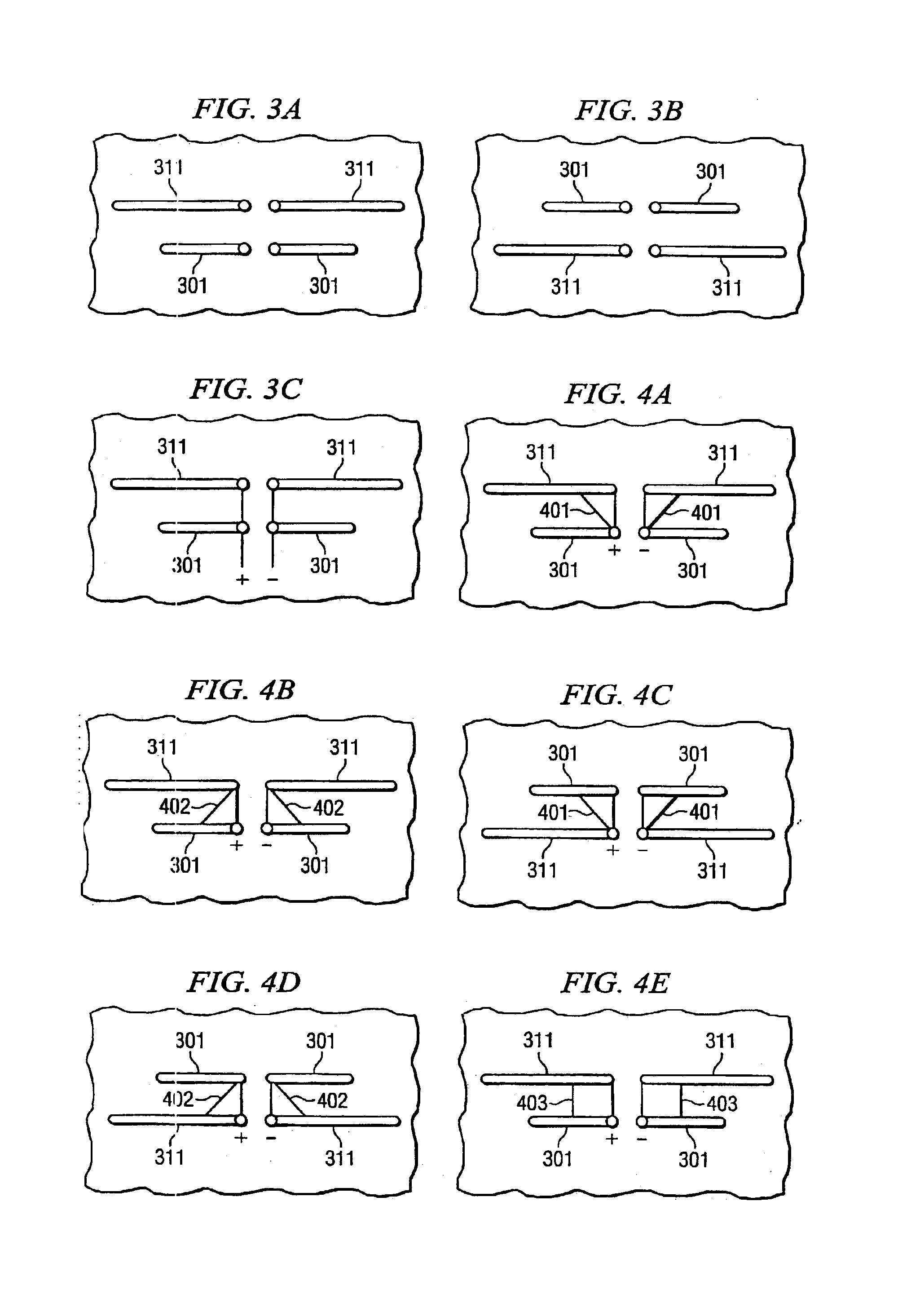Multiband branch radiator antenna element
a radiator antenna and multi-band technology, applied in the field of wireless communication, can solve the problems of complex antenna feed network in such a dual-band configuration, complex or otherwise undesirable, and high and achieve the effect of reducing the cost of antenna feed cables
- Summary
- Abstract
- Description
- Claims
- Application Information
AI Technical Summary
Benefits of technology
Problems solved by technology
Method used
Image
Examples
Embodiment Construction
[0029]In understanding the concepts and advantages of embodiments of the present invention, a discussion of various prior art antenna element configurations is helpful. Accordingly, some detail with respect to prior art antenna configurations, such as information with respect to dipole antenna elements, is provided hereinbelow.
[0030]A dipole is formed by a pair of balanced transmission lines, opened-out into a twin colinear line (poles 101) as shown in FIG. 1A. Its radiation pattern, radiation resistance and directivity are critically dependent upon length (l). A widely accepted optimum length is the half-wave dipole configuration (l=½λ) with a fundamental radiation pattern resembling a doughnut shape. This is a result of sinusoidal current vanishing at end points of the dipole. In other words, the configuration is limited to a single resonant frequency with the fundamental radiation pattern, dictated by its physical resonant length l. Gain of such dipole antennas has been measured ...
PUM
 Login to View More
Login to View More Abstract
Description
Claims
Application Information
 Login to View More
Login to View More - R&D
- Intellectual Property
- Life Sciences
- Materials
- Tech Scout
- Unparalleled Data Quality
- Higher Quality Content
- 60% Fewer Hallucinations
Browse by: Latest US Patents, China's latest patents, Technical Efficacy Thesaurus, Application Domain, Technology Topic, Popular Technical Reports.
© 2025 PatSnap. All rights reserved.Legal|Privacy policy|Modern Slavery Act Transparency Statement|Sitemap|About US| Contact US: help@patsnap.com



